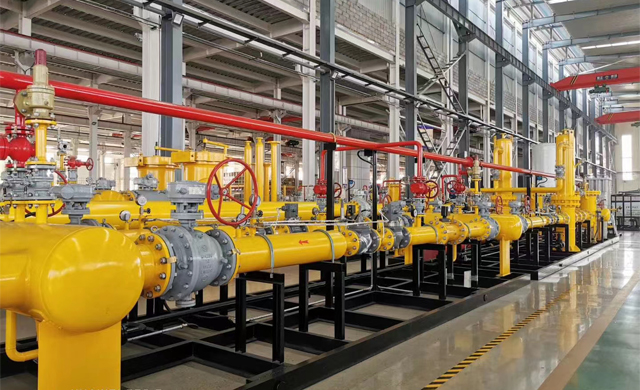
Dec . 22, 2024 14:45
Back to list
صمام التنفيس
Understanding Pressure Relief Valves A Comprehensive Overview
Pressure relief valves (PRVs) play a crucial role in various industrial applications, safeguarding systems from excessive pressure buildup. These devices are designed to release pressure when it reaches a predetermined level, thus preventing equipment failures and ensuring safety in operations. In this article, we will explore the significance, types, functionality, and maintenance of pressure relief valves.
Significance of Pressure Relief Valves
Pressure relief valves are paramount in industries such as oil and gas, chemical processing, and water treatment. When a system experiences pressure fluctuations due to thermal expansion, system malfunctions, or process upsets, a PRV acts as a fail-safe mechanism. The primary function of a PRV is to protect vessels, pipes, and other critical equipment from overpressure, which can lead to catastrophic failures, explosions, or leaks. By venting excess pressure, PRVs ensure that operations run smoothly and safely.
Types of Pressure Relief Valves
There are various types of pressure relief valves, each suited to specific applications
1. Spring-Loaded Pressure Relief Valves These are the most common type, featuring a spring mechanism that holds a disc against the valve seat. When pressure exceeds the set limit, the spring compresses, allowing the disc to lift and release excess pressure.
2. Pilot-Operated Pressure Relief Valves These valves utilize a small pilot valve to control a larger valve. The pilot valve opens at a predetermined pressure, which then opens the larger valve to vent excess pressure. They are favored for their reliability and ability to handle high flow rates.
3. Safety Relief Valves These are designed for gas applications and provide rapid release when pressure exceeds safety limits. They automatically reset after the pressure drops back to normal levels.
.
How Pressure Relief Valves Work
صمام التنفيس

The operation of a pressure relief valve is straightforward yet vital. When pressure in a system rises beyond the set pressure, the force exerted on the valve exceeds the force of the spring holding the valve closed. This causes the valve to open, allowing the fluid (gas or liquid) to escape and thereby reducing the pressure in the system. Once the pressure falls below the set limit, the spring mechanism pushes the valve back to a closed position, sealing the system once more.
It is essential to set the correct pressure limit for the PRV based on the operational requirements of the system. Improperly set valves can either release pressure too early, leading to inefficiencies, or too late, risking damage to the equipment.
Maintenance of Pressure Relief Valves
Regular maintenance of pressure relief valves is crucial to ensure their effectiveness and reliability. Here are some best practices for PRV maintenance
1. Regular Testing It is essential to periodically test the valves to ensure they open at the correct pressure. This can involve manual testing or using specialized equipment.
2. Visual Inspections Routine inspections should be conducted to check for signs of corrosion, leaks, or wear. Any abnormalities should be addressed immediately to prevent failures.
3. Cleaning Keeping the valve free of debris and contaminants will ensure smooth operation. Accumulated dirt can cause valves to stick, impairing their performance.
4. Documentation It's vital to maintain accurate records of all maintenance activities. This documentation aids in tracking performance trends and supports regulatory compliance.
Conclusion
Pressure relief valves are essential components in maintaining safety and efficiency in various industrial systems. Understanding the different types, their operation, and maintenance requirements is crucial for any facility relying on pressurized systems. By prioritizing the correct installation, regular testing, and maintenance of PRVs, industries can significantly reduce risks associated with overpressure, safeguarding both equipment and human safety. Through diligent attention to these devices, organizations can enhance their operational reliability and protect their investments.
Next:
Latest news
-
Safety Valve Spring-Loaded Design Overpressure ProtectionNewsJul.25,2025
-
Precision Voltage Regulator AC5 Accuracy Grade PerformanceNewsJul.25,2025
-
Natural Gas Pressure Regulating Skid Industrial Pipeline ApplicationsNewsJul.25,2025
-
Natural Gas Filter Stainless Steel Mesh Element DesignNewsJul.25,2025
-
Gas Pressure Regulator Valve Direct-Acting Spring-Loaded DesignNewsJul.25,2025
-
Decompression Equipment Multi-Stage Heat Exchange System DesignNewsJul.25,2025

